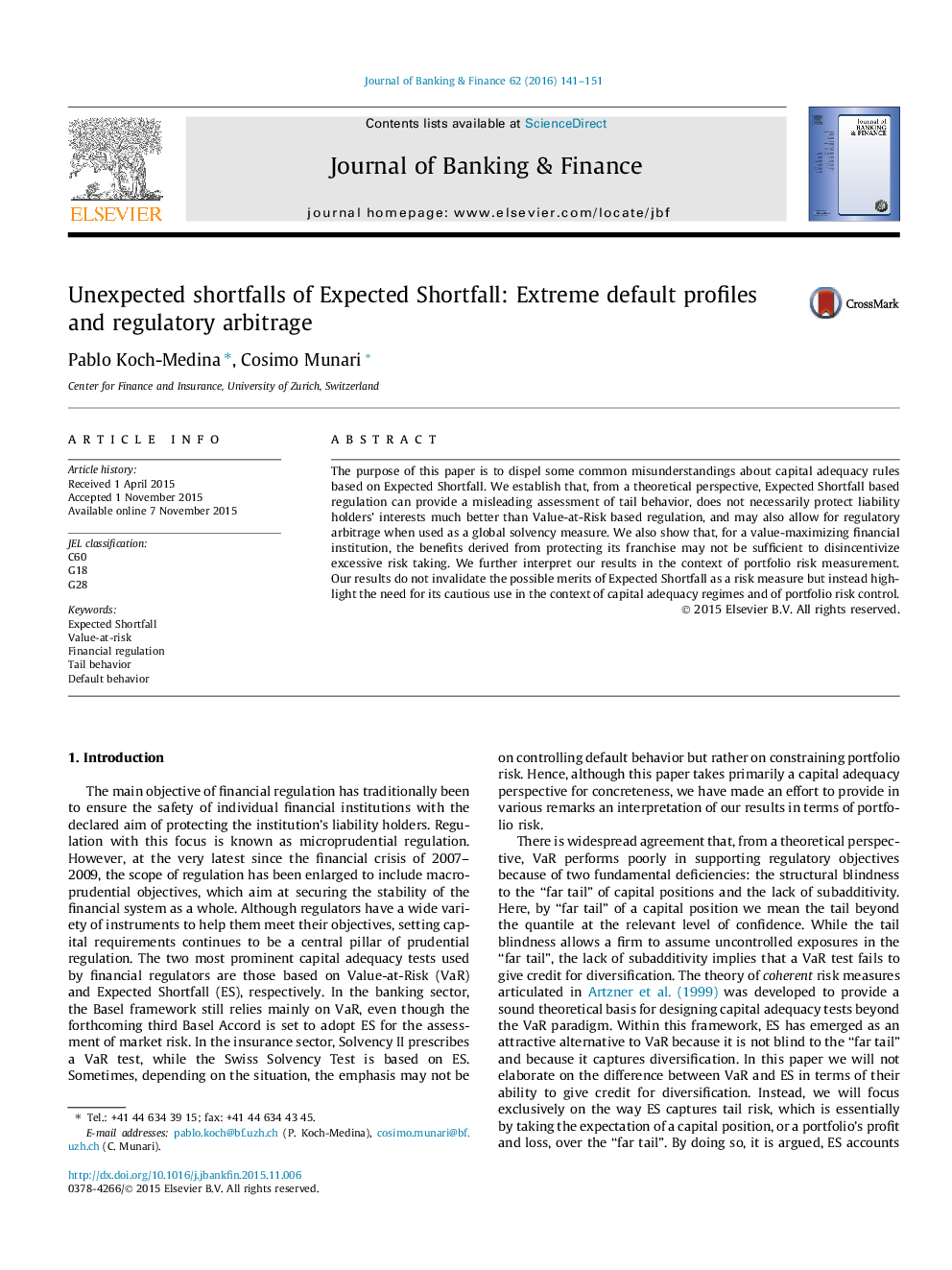| Article ID | Journal | Published Year | Pages | File Type |
|---|---|---|---|---|
| 5088471 | Journal of Banking & Finance | 2016 | 11 Pages |
The purpose of this paper is to dispel some common misunderstandings about capital adequacy rules based on Expected Shortfall. We establish that, from a theoretical perspective, Expected Shortfall based regulation can provide a misleading assessment of tail behavior, does not necessarily protect liability holders' interests much better than Value-at-Risk based regulation, and may also allow for regulatory arbitrage when used as a global solvency measure. We also show that, for a value-maximizing financial institution, the benefits derived from protecting its franchise may not be sufficient to disincentivize excessive risk taking. We further interpret our results in the context of portfolio risk measurement. Our results do not invalidate the possible merits of Expected Shortfall as a risk measure but instead highlight the need for its cautious use in the context of capital adequacy regimes and of portfolio risk control.
